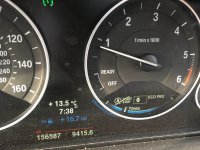I feel I was an expert on our 500TA and SS.
There's a few threads on here about my history and story about it.
After spending £100 or so on a new battery and plugging it into the battery charger each and every time we came home, made it 100% perfect every time, and every time for years. The car was three years old when we bought it and the battery was shot as a SS battery but worked faultlessly in a normal non SS car and continues to do.
Wipers, lights, whatever. Three minutes in stop mode as per design providing that the battery is in tip top condition.
Trouble is, why the heck does it work like that?
If the car would start normally even with an older battery, why can't the SS just remain in stop mode for as long as necessary ...... within reason?
It worked well, but at a cost of money plus hassle. From what I hear, other makes of cars have no issues like this at all. They just work. Full stop.
Regards to all,
Mick.
There's a few threads on here about my history and story about it.
After spending £100 or so on a new battery and plugging it into the battery charger each and every time we came home, made it 100% perfect every time, and every time for years. The car was three years old when we bought it and the battery was shot as a SS battery but worked faultlessly in a normal non SS car and continues to do.
Wipers, lights, whatever. Three minutes in stop mode as per design providing that the battery is in tip top condition.
Trouble is, why the heck does it work like that?
If the car would start normally even with an older battery, why can't the SS just remain in stop mode for as long as necessary ...... within reason?
It worked well, but at a cost of money plus hassle. From what I hear, other makes of cars have no issues like this at all. They just work. Full stop.
Regards to all,
Mick.




